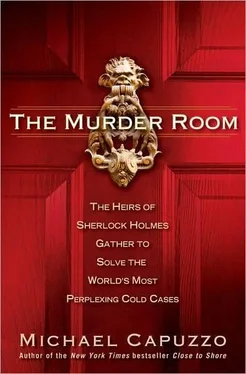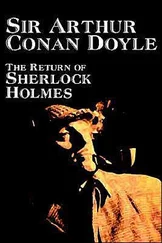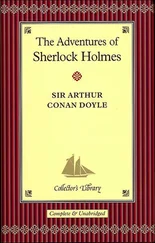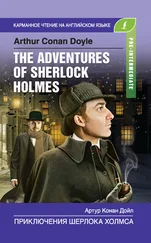George and Betty said they remained determined to find their daughter’s killer.
“Hopefully, that son-of-a-gun is still out there walking around and something happens that will bring him out of his hole,” Betty had recently told the Trentonian newspaper, when the reporter called to see what she thought of the Vidocq Society’s involvement. The newspaper headline had read ROY ’S RIDDLE: CAN GROUP CRACK CASE?
Betty reiterated her conviction that Terri had been killed by her boyfriend. “I thought it was the boyfriend all along.”
Her husband, George, quickly disagreed. “They were engaged,” he said, shaking his head. He just couldn’t see it. But Betty said she’d had a funny feeling when the boyfriend showed up at their house to give them the terrible news that Terri had been murdered. He expressed his grief, but something was not right. They’d seen him only one more time in the ensuing fourteen years, and that incident still bothered her, too. Two weeks after Terri was buried, they ran into him on the street. “He made a point of letting us know he had a date,” Betty said.
Sergeant Cloud held up his hand to clarify the point. He’d committed the case file to memory, all two hundred interviews, and the Brookses weren’t making sense. The police had eliminated Terri’s boyfriend as a suspect almost immediately fourteen years ago. Unable to pin it on him or any of Terri’s coworkers, they quickly saw the crime as a robbery gone wrong.
“The boyfriend had an airtight alibi,” Cloud said. “He was in California at the time.”
Betty’s eyebrows shot up. “Oh, no!” she exclaimed. “Not that boyfriend! There was another guy.” Terri had already broken up with the guy who went to California. There was a new one.”
“What was his name?” Cloud asked.
She shook her head. She couldn’t remember. She’d barely gotten to know him during the eight months he was engaged to her daughter. “He was not the type that would come over to the house,” she said. But a few minutes later, a surname came to her. “O’Keefe, I think.” She couldn’t recall a first name.
Thanking the couple for their time, Sergeant Cloud drove back to the Falls Township Police Department and asked around about O’Keefe. He got blank stares. He ran the name through the computer and came up empty. Frustrated, he called his friend Ed Gaughan, the private eye, at the Philadelphia brownstone headquarters of the Vidocq Society, and asked him about “O’Keefe.”
Gaughan had never heard the name, but he and Fleisher both searched for “O’Keefe” in their computers, using proprietary databases designed for lawyers, private eyes, and bail bondsmen to find anyone with an arrest record. Both men struck out on “O’Keefe.”
Gaughan called Sergeant Cloud back. “Are you sure of the spelling?”
No, Cloud wasn’t sure.
“Was he at the funeral?” Gaughan asked. “Check the guest book.”
Sergeant Cloud had the large, leather-bound book right on his desk. He ran his fingers down the ruled pages where the mourners had signed in at Terri Brooks’s funeral. There was no O’Keefe. But there was a different name: Keefe.
Alfred Scott Keefe. “Son of a gun,” Cloud said.
Finding nothing on the police department computer, he called back Gaughan at the Vidocq Society. Gaughan and Fleisher ran the name “Alfred Scott Keefe” of Warminster, Pennsylvania, the town where Terri Brooks was living when she was killed.
“Alfred Scott Keefe” in Warminster was a hit. He was in his thirties, with a clean record except for a minor offense, driving under the influence.
Reading back through the case file, he found Keefe’s name. The police had interviewed Terri’s friends about Keefe fourteen years ago, and uncovered a story that made them suspicious. Terri Brooks and Alfred Scott Keefe were engaged to marry that summer. Two days before her death, Brooks and Keefe made a deposit on a honeymoon trip to Hawaii. Brooks was planning to buy a wedding dress in a few days. Yet even as they went through the motions, their relationship was tense, her friends said. Brooks was getting cold feet. Keefe was angry at her for leaving a better-paying job to seek advancement with the Marriott Corporation. He was obsessed with the fear that she was seeing someone else, and was threatening to break off their engagement. To the police at the time, a spurned lover had a passable motive, but they had no evidence implicating Keefe.
Sergeant Cloud learned that Keefe had stayed in the area. He had married and had a child, and was separated from his wife. He had a menial job in a local pizza parlor, and had moved back into the same family home he occupied while dating Brooks. Keefe was living with his mother.
Sergeant Cloud spoke with Walter about his profile. An intriguing detail jumped out at Walter from the old police file. An hour before the murder, Alfred Scott Keefe’s pickup truck had been seen in a parking lot next to Roy Rogers. Unique among the personality subtypes, the anger-retaliatory killer stalked his prey. “From a distance, the AR builds and reaffirms his rage,” Walter said. “When he begins to close the distance, the commitment to kill has been made.”
“Congratulations,” Walter told Cloud. “You’ve found your killer.”
In September 1998, Sergeant Cloud noted a significant fact in Keefe’s DUI, his only offense on record. When Keefe was stopped while driving under the influence, on the front seat of the car was a pack of cigarettes.
Keefe was a smoker; Newport Filters.
Thanks to the forensic savvy of VSM and medical examiner Hal Fillinger, who had performed the autopsy on Brooks fifteen years earlier, the police had DNA samples of the killer. Fillinger had carefully saved the hairs on Brooks’s clothing, and the skin lodged under her fingernails during her desperate fight for life, having no way of knowing how useful the genetic material could be fifteen years later. The material contained the DNA of a male human, but was it the genetic material of Alfred Scott Keefe?
Early one morning in October, Keefe walked out of his mother’s house in the one hundred block of Horseshoe Lane in Warminster Township -the historic burg where William Penn signed his treaty with the Indians-left a bag of garbage on the sidewalk, and returned inside. He was unaware that Warminster had been alerted not to pick up his trash that morning. Falls Township, twenty miles away on the Delaware River, would be providing the service.
Officer Nelson Whitney, who had been watching, quietly drove an unmarked car up to the curb on Horseshoe Lane, grabbed the garbage bag, and drove away. Back at the station, he and Sergeant Cloud were pleased to find a treasure in Keefe’s trash.
It was a cigarette butt. A Newport Filter.
They sent it to the lab to test for the presence of DNA in dried saliva.
Walter chuckled when he heard. “Maybe cigarettes are bad for your health after all.”
CHAPTER 48. INTERROGATION
Alfred Scott Keefe, a skinny man with nervous dark eyes, was sitting in a windowless interrogation room the size of a storage closet. The cops had taken him from the pizza parlor and he smelled faintly of mozzarella cheese, cigarettes, and body odor. He was seated in a hard wooden chair, with his back literally against the wall. Two pneumograph tubes crossed his chest. A cardio cuff clamped his arm. Galvanic skin electroplates pinched his fingers. The large shadows of Vidocq Society Members Bill Fleisher and Nate Gordon, sumo wrestlers in suits and two of the best polygraph examiners and interrogators in the world, were very close.
Keefe had volunteered to come in from his job making pizzas that afternoon to answer questions to clear himself. He’d agreed to take the lie-detection test. But now his whole body was vibrating as if the scientific instruments were medieval irons holding him fast, and the cool, mechanically repeated questions the incessant falling of a whip.
Читать дальше












